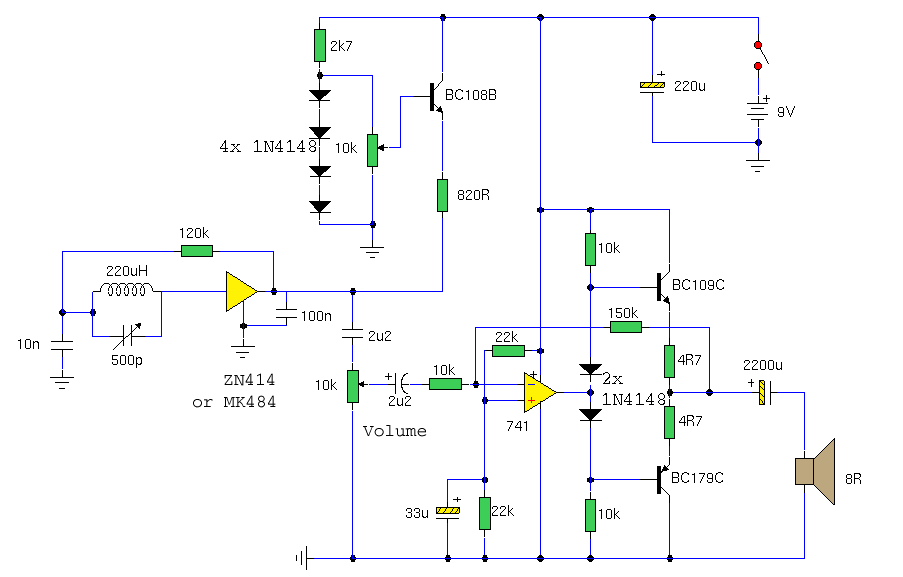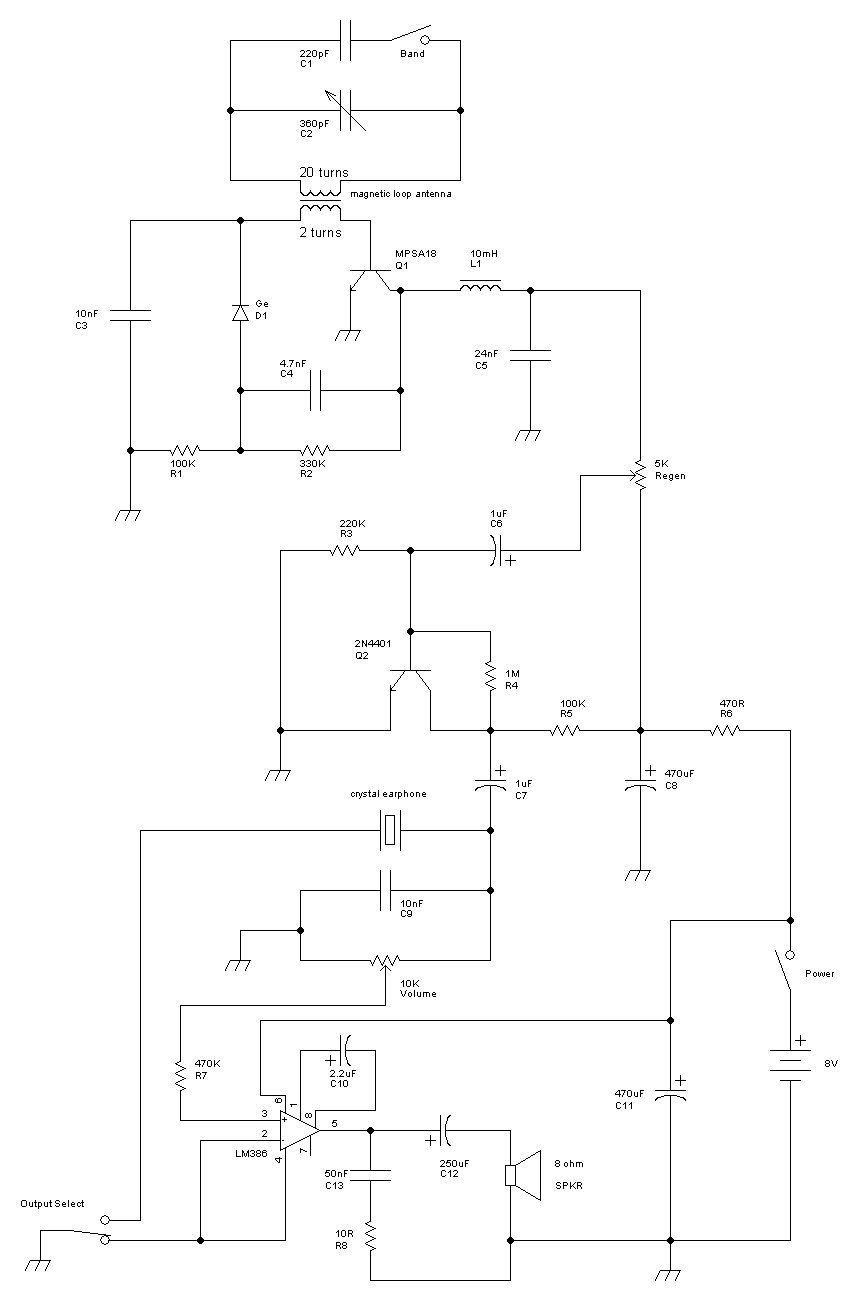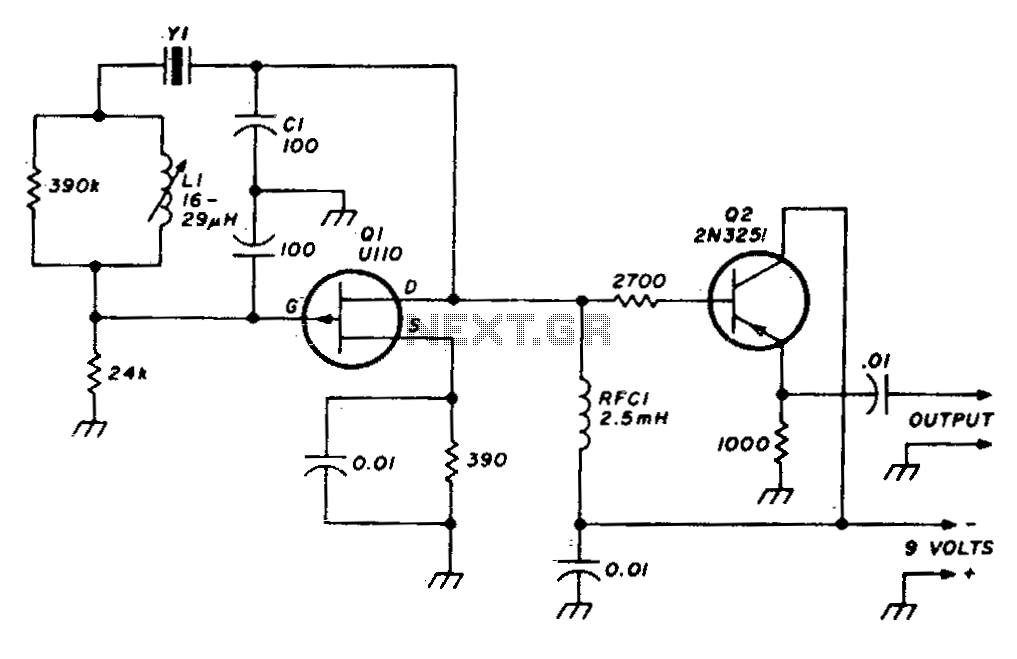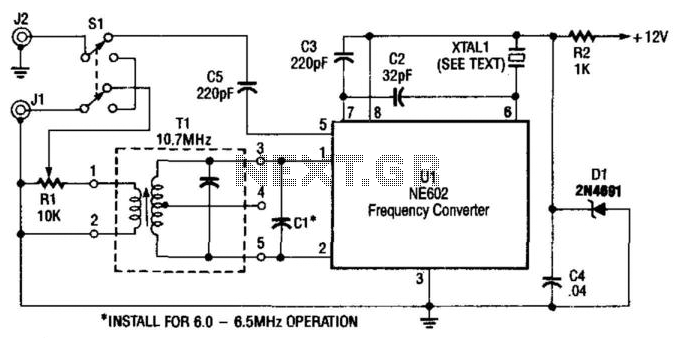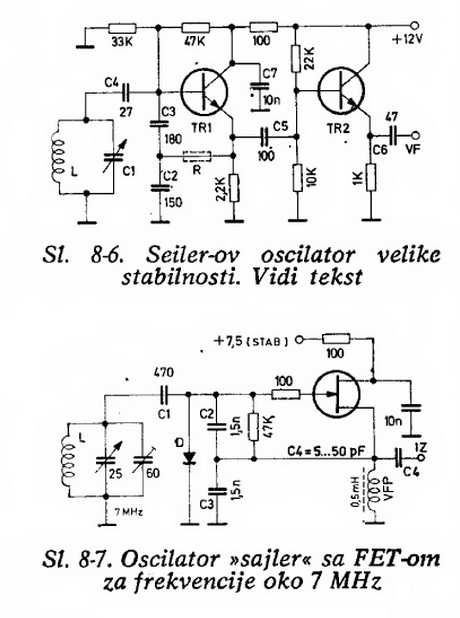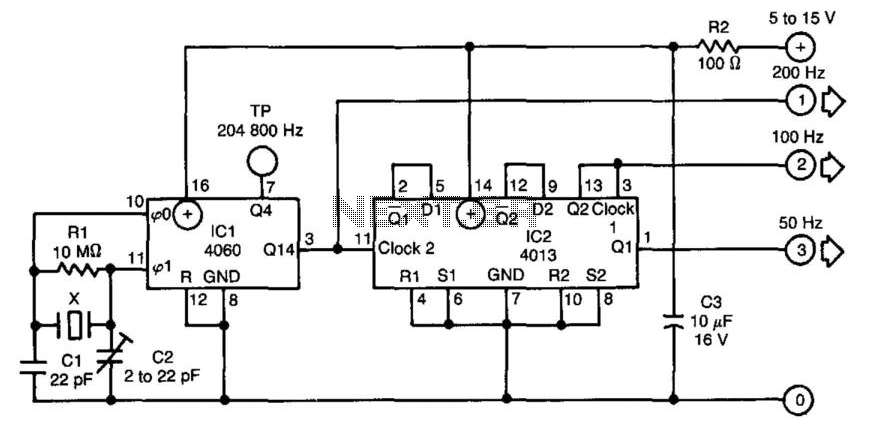
My Crystal Radio Page
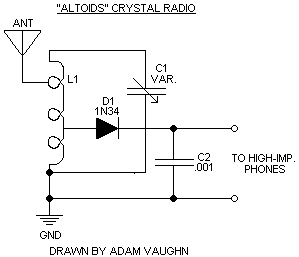
Crystal radios do not require external power sources to operate; they rely solely on radio waves. The first crystal set constructed was a "variometer" radio, which features a larger coil that slides over a smaller coil to modify the inductance, thereby eliminating the need for a variable capacitor. The current radio project incorporates two smaller coils, enhancing selectivity. This design was sourced from the May 1995 issue of Popular Electronics. The coils are fabricated from PVC pipe, with the longer coil measuring 8 inches in length and 1 inch in diameter, while the shorter coil measures 3 inches in length and 1.5 inches in diameter. Other components are mounted on a long terminal strip. Initially, the radio was nonfunctional due to the use of a Zener diode instead of the required 1N34 germanium diode. After acquiring some 1N34A germanium diodes, the radio began to operate correctly. Living in a fringe area for AM signals and experiencing intermittent connections in high-impedance headphones led to the addition of a one-transistor amplifier, based on a design from the Boys Second Book of Radio and Electronics. However, this amplifier presents issues, as using a crystal earphone as a microphone results in soft and unintelligible output. The transistor used is a 2N217 (ECG102A), differing from the original design calling for a CK722 (ECG102). Despite the ECG102A being a more robust version, the voltage discrepancies remain a concern. Attempts to adjust the bias resistor from 0.39 MΩ to 27 kΩ and increase the voltage from 3V to 6V have not resolved the issues. A schematic for both circuits is provided below. The second crystal radio is a simpler "slider" set, utilizing a single coil and a metal slider for tuning. Like the previous set, all components are mounted on a terminal strip, but this design features a square wooden coil form mounted diagonally, sourced from The Boys First Book of Radio and Electronics. This radio functioned successfully on the first attempt, despite using approximately 51 feet of 22-gauge wire instead of the specified 130 feet of 26-gauge wire. While this crystal set is less selective, it performs comparably to the variometer crystal set. A schematic for this design is also included. The third crystal radio project is based on a simple ferrite coil and variable capacitor design, initially intended for construction within an "Altoids" mint tin. Components were salvaged from a failed AM/FM radio kit. The FM section, which was prebuilt, tuned from below the FM broadcast band to its beginning, while the AM section lacked a detector diode and could only receive one station, with the tuning capacitor only adjusting the volume. Instead of the 2SC transistor-based preamplifier from the AM/FM kit, a true detector diode will be implemented. Concerns arose regarding potential interference from the metal tin on the antenna coil. Unfortunately, mounting the ferrite coil within the tin caused it to function as a wavetrap, blocking AM signals while allowing shortwave signals to pass through, resulting in intermittent reception of CBC and BBC World Service. The variable capacitor proved ineffective, receiving multiple signals simultaneously. The project was later transferred to a Radio Shack plastic enclosure in hopes of resolving these issues, but the problems persisted.
The crystal radio designs described utilize fundamental principles of radio frequency reception, leveraging the natural energy of radio waves. The variometer design exemplifies innovative tuning methods by adjusting inductance rather than capacitance. The dual-coil configuration enhances selectivity, allowing for clearer reception of desired signals. The choice of materials, such as PVC for the coil forms, contributes to the durability and effectiveness of the design.
The incorporation of a one-transistor amplifier highlights the importance of amplification in fringe reception areas, where signal strength is weak. The performance discrepancies between the 2N217 and CK722 transistors indicate the necessity of matching components to the original design specifications. Adjustments to bias and voltage are critical in optimizing transistor performance, particularly in audio applications where clarity and volume are paramount.
The slider set presents a more straightforward approach to crystal radio construction, demonstrating that effective designs can be achieved with fewer components. The use of a wooden coil form not only simplifies the assembly process but also impacts the radio's performance characteristics.
The third project illustrates the challenges of integrating salvaged components into new designs. The ferrite coil and variable capacitor configuration is a common approach in crystal radios, but the choice of enclosure can significantly affect performance. The issues faced with the Altoids tin highlight the sensitivity of radio components to their environment, particularly regarding electromagnetic interference.
Overall, these projects reflect a blend of creativity, resourcefulness, and technical understanding, demonstrating the enduring appeal of crystal radio construction as both an educational and practical endeavor in the field of electronics.Crystal radios require no outside sources of power to operate, just the radio waves themselves. The first crystal set I built was a "variometer" radio. In this design, one larger coil slides over a smaller coil to change the coil`s inductance, eliminating the need for avariable capacitor. The radio I`m building has two smaller coils, making it more selective ( ). I got the design from the May 1995 issue of Popular Electronics. The coil forms are made from PVC pipe. The smaller, longer coil which holds the two smaller coils is 8 inches long and 1 inch inside diameter. The shorter, larger coil which slides over the other pipe is 3 inches long and 1. 5 inches inside diameter. The other components are installed using a long terminal strip. At first the radio didn`t work because the detector diode, which should be a 1N34 germanium diode, was a Zener diode.
Luckily, someone sent me some 1N34A germanium diodes, and now it works fine. Since I live in a "fringe" area for AM signals and my only set of high-impedance headphones has an intermittent connection in the "junction box" where the headphone cord is split to the two `phones, I`ve added an onboard one-transistor amplifier, whose design I found in the Boys Second Book of Radio and Electronics. Unfortunately, it has some problems. When using a crystal earphone as a microphone, the output is soft and unintelligible. The problem could lie with the transistor, since I`m using a 2N217 (ECG102A) when the original circuit calls for a CK722 (ECG102).
The ECG102A is a more rugged version of the ECG102, but the voltages are different. Reducing the bias( ) resistor from. 39 Meg to 27K and doubling the voltage from 3V to 6V hasn`t made a difference. A schematic for both can be found below. My second crystal radio is a much-simpler "slider" set. This type of crystal set uses a single coil and a "slider, " which is a piece of metal which slides over the tuning coil to tune the radio. Like my other crystal set, all the parts are mounted on a terminal strip. Unlike my other crystal set, this one uses a square wooden coil form mounted diagonally. I found the design for this set in The Boys First Book of Radio and Electronics. This radio worked on the first try. This surprised me since the coil, which called for 130 feet of 26-gauge wire, has roughly 51 feet of 22-gauge wire (I had no 26-gauge wire so I used what I had, which was 22-gauge wire).
This crystal set isn`t quite as selective as it could be, but it works just as well as my variometer crystal set (possibly better). A schematic of this set can be found below. My third crystal radio project is a simple ferrite coil and variable capacitor design. I was originally planning to build this radio in an "Altoids" mints tin. I salvaged the coil and variable capacitor from a failed AM/FM radio kit I once tried to build. The FM section, which came on a prebuilt circuit board, would tune from what I believe is below the FM broadcast band to the very beginning of it, while the AM section, which didn`t even have a detector diode, would only get one station, with the tuning capacitor only varying the volume of the station.
Instead of the 2SC transistor-based "preamplifier" the AM section of the AM/FM radio kit used, which I suspect is what caused the tuning problem, I`m going to be using a true detector diode. I was hoping the metal tin wouldn`t cause problems with the antenna coil. Unfortunately, mounting the ferrite coil in the tin seemed to be causing the coil to act like a wavetrap, blocking AM signals and only allowing shortwave signals (I was surprised to hear CBC and BBC World Service drifting in and out of my headphones).
Also, the variable cap did nothing, and it got two or more signals at once. I transplanted the innards to a Radio Shack plastic enclosure, hoping it would fix the problem, but it didn`t ch 🔗 External reference
The crystal radio designs described utilize fundamental principles of radio frequency reception, leveraging the natural energy of radio waves. The variometer design exemplifies innovative tuning methods by adjusting inductance rather than capacitance. The dual-coil configuration enhances selectivity, allowing for clearer reception of desired signals. The choice of materials, such as PVC for the coil forms, contributes to the durability and effectiveness of the design.
The incorporation of a one-transistor amplifier highlights the importance of amplification in fringe reception areas, where signal strength is weak. The performance discrepancies between the 2N217 and CK722 transistors indicate the necessity of matching components to the original design specifications. Adjustments to bias and voltage are critical in optimizing transistor performance, particularly in audio applications where clarity and volume are paramount.
The slider set presents a more straightforward approach to crystal radio construction, demonstrating that effective designs can be achieved with fewer components. The use of a wooden coil form not only simplifies the assembly process but also impacts the radio's performance characteristics.
The third project illustrates the challenges of integrating salvaged components into new designs. The ferrite coil and variable capacitor configuration is a common approach in crystal radios, but the choice of enclosure can significantly affect performance. The issues faced with the Altoids tin highlight the sensitivity of radio components to their environment, particularly regarding electromagnetic interference.
Overall, these projects reflect a blend of creativity, resourcefulness, and technical understanding, demonstrating the enduring appeal of crystal radio construction as both an educational and practical endeavor in the field of electronics.Crystal radios require no outside sources of power to operate, just the radio waves themselves. The first crystal set I built was a "variometer" radio. In this design, one larger coil slides over a smaller coil to change the coil`s inductance, eliminating the need for avariable capacitor. The radio I`m building has two smaller coils, making it more selective ( ). I got the design from the May 1995 issue of Popular Electronics. The coil forms are made from PVC pipe. The smaller, longer coil which holds the two smaller coils is 8 inches long and 1 inch inside diameter. The shorter, larger coil which slides over the other pipe is 3 inches long and 1. 5 inches inside diameter. The other components are installed using a long terminal strip. At first the radio didn`t work because the detector diode, which should be a 1N34 germanium diode, was a Zener diode.
Luckily, someone sent me some 1N34A germanium diodes, and now it works fine. Since I live in a "fringe" area for AM signals and my only set of high-impedance headphones has an intermittent connection in the "junction box" where the headphone cord is split to the two `phones, I`ve added an onboard one-transistor amplifier, whose design I found in the Boys Second Book of Radio and Electronics. Unfortunately, it has some problems. When using a crystal earphone as a microphone, the output is soft and unintelligible. The problem could lie with the transistor, since I`m using a 2N217 (ECG102A) when the original circuit calls for a CK722 (ECG102).
The ECG102A is a more rugged version of the ECG102, but the voltages are different. Reducing the bias( ) resistor from. 39 Meg to 27K and doubling the voltage from 3V to 6V hasn`t made a difference. A schematic for both can be found below. My second crystal radio is a much-simpler "slider" set. This type of crystal set uses a single coil and a "slider, " which is a piece of metal which slides over the tuning coil to tune the radio. Like my other crystal set, all the parts are mounted on a terminal strip. Unlike my other crystal set, this one uses a square wooden coil form mounted diagonally. I found the design for this set in The Boys First Book of Radio and Electronics. This radio worked on the first try. This surprised me since the coil, which called for 130 feet of 26-gauge wire, has roughly 51 feet of 22-gauge wire (I had no 26-gauge wire so I used what I had, which was 22-gauge wire).
This crystal set isn`t quite as selective as it could be, but it works just as well as my variometer crystal set (possibly better). A schematic of this set can be found below. My third crystal radio project is a simple ferrite coil and variable capacitor design. I was originally planning to build this radio in an "Altoids" mints tin. I salvaged the coil and variable capacitor from a failed AM/FM radio kit I once tried to build. The FM section, which came on a prebuilt circuit board, would tune from what I believe is below the FM broadcast band to the very beginning of it, while the AM section, which didn`t even have a detector diode, would only get one station, with the tuning capacitor only varying the volume of the station.
Instead of the 2SC transistor-based "preamplifier" the AM section of the AM/FM radio kit used, which I suspect is what caused the tuning problem, I`m going to be using a true detector diode. I was hoping the metal tin wouldn`t cause problems with the antenna coil. Unfortunately, mounting the ferrite coil in the tin seemed to be causing the coil to act like a wavetrap, blocking AM signals and only allowing shortwave signals (I was surprised to hear CBC and BBC World Service drifting in and out of my headphones).
Also, the variable cap did nothing, and it got two or more signals at once. I transplanted the innards to a Radio Shack plastic enclosure, hoping it would fix the problem, but it didn`t ch 🔗 External reference
Warning: include(partials/cookie-banner.php): Failed to open stream: Permission denied in /var/www/html/nextgr/view-circuit.php on line 713
Warning: include(): Failed opening 'partials/cookie-banner.php' for inclusion (include_path='.:/usr/share/php') in /var/www/html/nextgr/view-circuit.php on line 713
